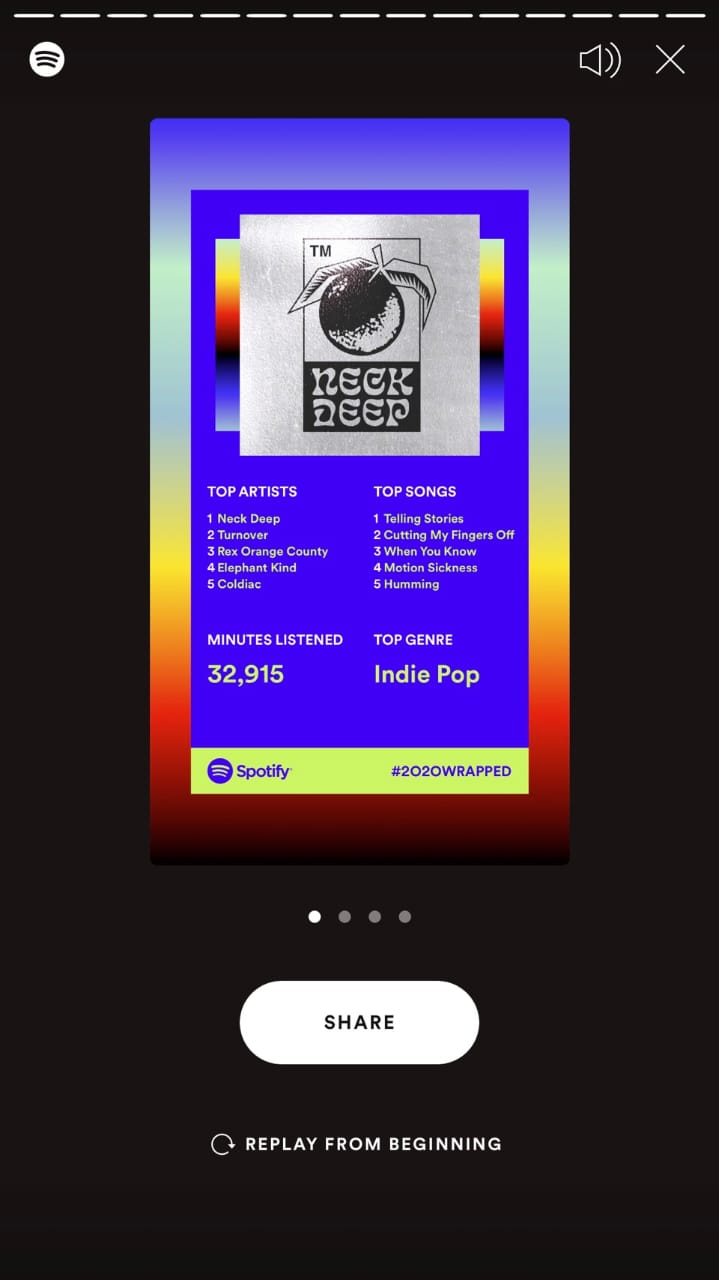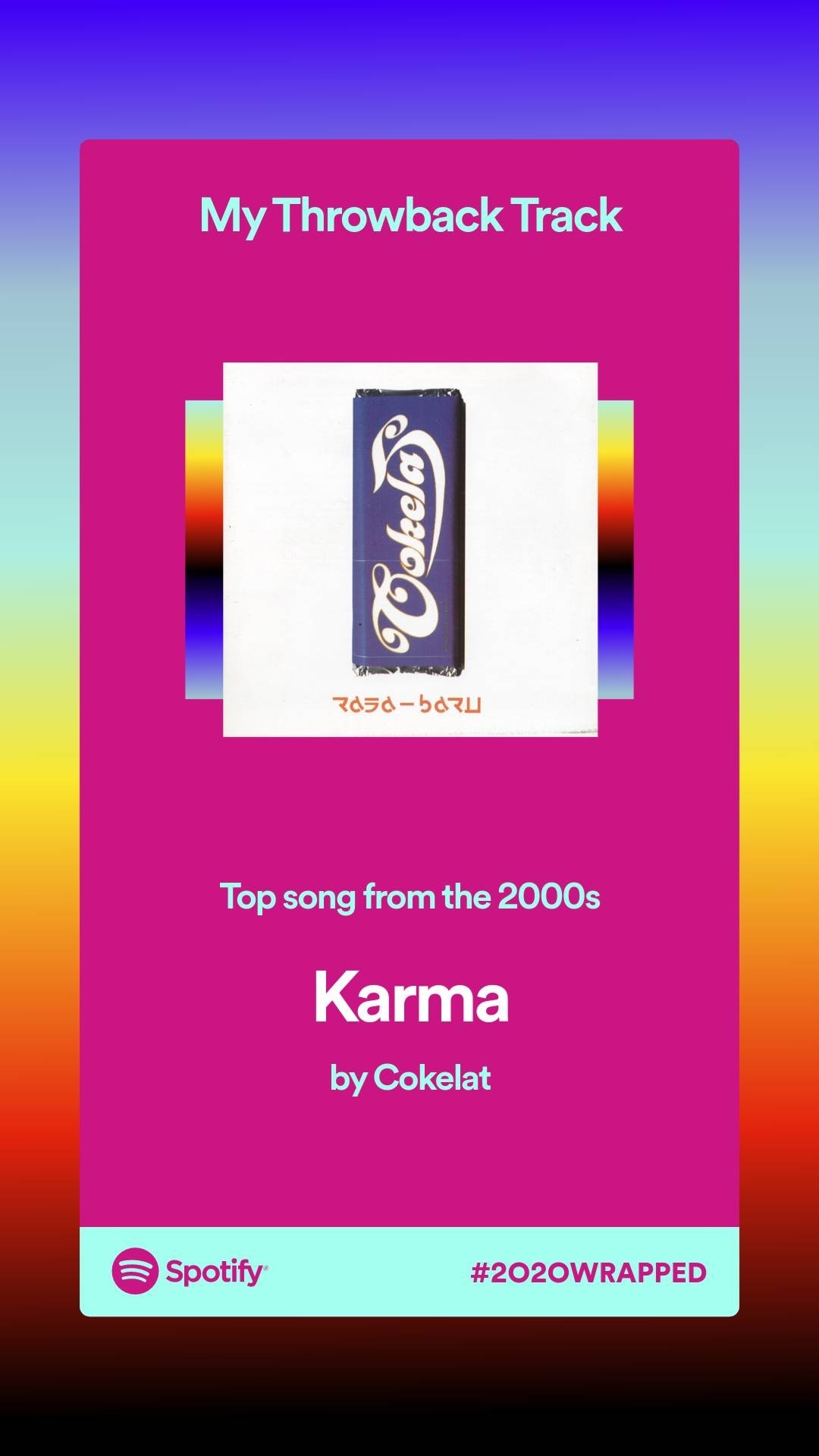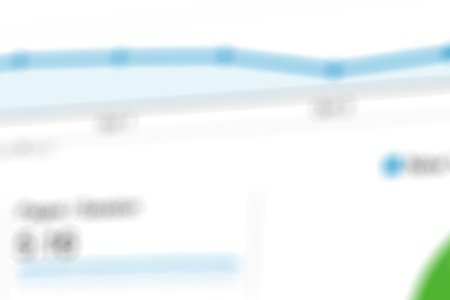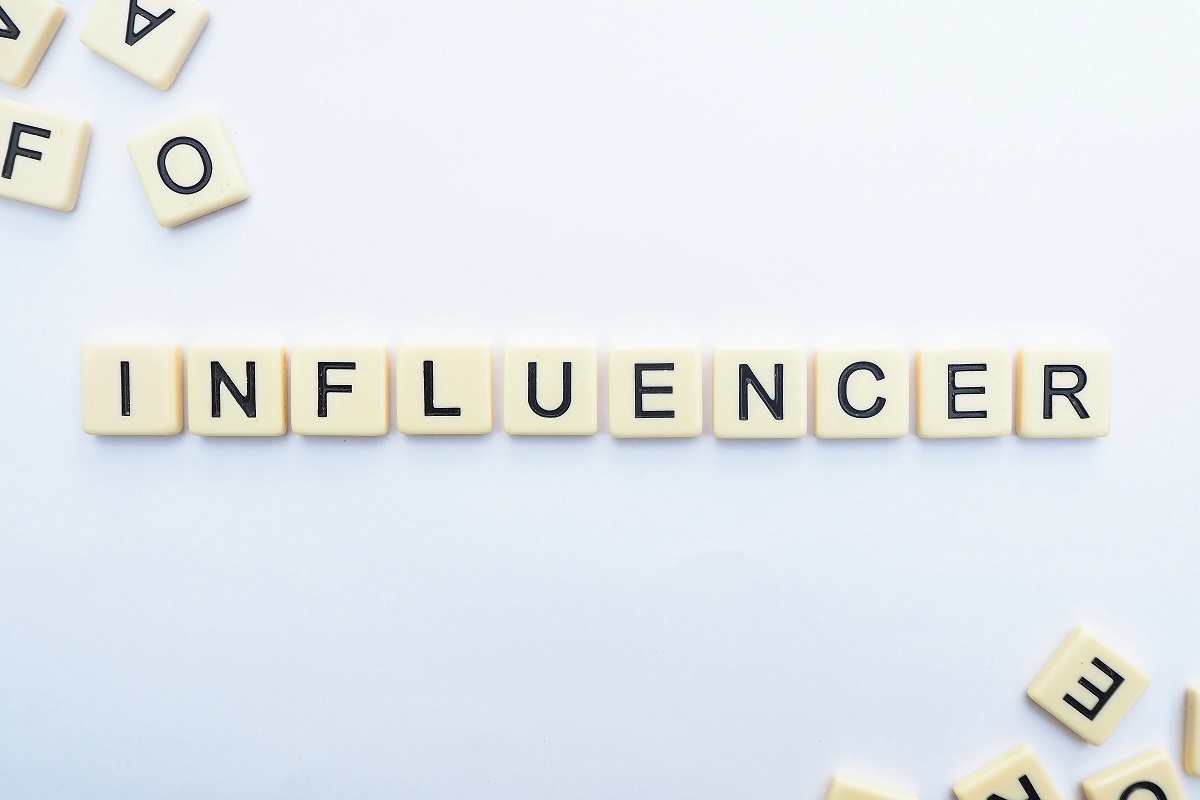Have you been listening to music while working or driving or while doing almost everything? Yeah, we can relate.
Listening to music for some people in a day is essential. It lightens up your day and works as a soundtrack of your life. Music streaming apps have the ability to complete the urban lifestyle by simplifying the method of music consumption into, well – a one-click away.
Spotify, a major music streaming app has once again proven that they are the leading brand within the industry through their grand finale campaign, Spotify Wrapped. The end-of-year marketing push unveils the company’s listening data throughout the year. And needless to say, it successfully created a huge buzz on social media.
#2020Wrapped was Spotify’s way of tapping into consumer psychology.
A year ago, more than 60 million users engaged with Spotify Wrapped 2019, the in-app story experience that racked up nearly 3 billion streams from Wrapped playlists. It was a massive hit on social media! According to Twitter, the brand campaign was mentioned in at least 1.2 million posts during the same period.
Prior to that discovery, Spotify Wrapped was released on a landing page or web-based personalized listening data statistic. In 2019, they decided to reveal partial data insights to allow people to access statistics usage in their respective mobile apps, which continues to this year, Spotify Wrapped 2020.
Spotify Wrapped was far from an individual event or digital experience, in which Spotify users received their personalized listening data from the past 11 months but behind a grand scheme: it was a brilliant marketing campaign. The method was easy, they simply had to tap into customer insights and positioned the data in a way that would appeal to the mass market. They collected users’ data such as listening behavior, favorite artist, most played songs and compiled it all into a personalized playlist. Spotify transformed data into visually interactive, attractive, and shareable content that entertained its users across the globe.

Since its launch, Spotify Wrapped had personalized data into what its audience would find meaningful during a reflective period and at the same time, enticed people to jump on the wagon of competition, based on the FOMO (Fear of Missing Out) mentality. People were encouraged to show their personality based on their music taste on social media and on hindsight – it had also attracted non-users to use the app just for the sake of being part of the trend. Why was this campaign infectious and how did it break out into a viral trend?
By analyzing the patterns of data-driven behaviors and understanding what they care about.
In order to answer those questions, we need to understand what a data-driven marketing campaign is and how data changes the marketing game.
Data-driven marketing campaigns use customers’ data to optimize performance by enabling more accurate predictions of customers’ preferences and broader trends that impact the success of marketing campaigns. Most data are taken directly from customer interactions (such as demographic, location, behaviors, etc.) can help enhance and improve any marketing strategy.
With such a big amount of data, the question is – what would we do in the realm of limitless data?
The key is to turn the cold statistical data into personalized experiences, to enable a personal touch. One that taps into the audience’s interest and emotional needs so that a brand can remain relevant and authentic.
To create a truly personalized experience, we need to focus more intently on customer trends and behavior, along with the channel of communication. For example, Spotify understands that people, or specifically their customers, love to compare themselves with another and express their emotions and life through a playlist. Customer psychology is based on the assumption that people have emotions that are tied to a memory, past or experience.

Their playlist represents an experience or moment in their lives that they want to share. It’s almost like a personality test that results in humans having an assumed better understanding of themselves through cultural references and in the modern context, we’re talking about music. This is how they ride on the trend of re-sharing their most played tunes for the year. It indirectly humanizes the data and creates a whole new experience for the user. A digital experience that was meaningful, relatable and unique.
“.. at the end of the day, making people want to talk about something is the only metric that matters,” Paymand Kassaie, Brand Lead of Spotify.
Creativity plays a big role to create such a tailored-experience for the customers. The data-driven marketing campaign is not about serving (or shoving, even) the data to customers. In order to convey a data-driven campaign, we also need to learn how to serve it; otherwise known as data storytelling.
Data-driven content is useless without strategic thinking.
As a successful campaign that has been working for almost 5 years, each year Spotify does something different to level-up their game. For Spotify Wrapped 2020, a Decade Wrapped has been chosen as this year’s theme. Same campaign but different positioning. The project allows the users to go back in time and reminiscence on 10 years of their music streaming data, and then share it with the world. That’s a decade worth of captured memories through music!
“We are telling stories through the data,” said Anshu Das, Senior Product Manager of Spotify.
Data storytelling is usually interpreted as visualizing data effectively, however, it’s much more than that. It tells a story with data, tailored to the specific audience with a compelling narrative. As mentioned before, people love to be reminded of the past. A playlist that touches on a personal level, to remember albums and songs people don’t remember loving without having a physical CD or records to remind them. A decade worth of listening data, compressed and served as visually-interactive, shareable content. This campaign definitely tells a story and worth the share.
One of the key things about the campaign was that Spotify made it accessible through the app, which brought more buzz for mobile users. All the engagement into the app and on social channels made Spotify Wrapped 2020 a marketing campaign worth the shout out!
The Future of Data-driven Marketing Campaigns is a competitive, rat race!
Gojek, a super-app from Indonesia also created a similar data-driven marketing campaign. In 2018, Gojek launched its campaign, called Laporan Kejog 2018 to its loyal customers. It was an in-app report that looked like a semester-end report card back in school with a comical note from the Gojek team as the teacher. This campaign was a massive hit because it was a collective memory of Indonesian, it showed their personal record of app usage, and once again, shareable content. Gojek showed data through a story and used the personal touch for this campaign. Many people voluntarily shared the campaign, became part of the campaign, and (unintentionally) became the unpaid influencer of the campaign.
In the era of big data, a data-driven marketing campaign is extremely doable (and crucial!). For the lack of resources or knowledge, perhaps it doesn’t have to be a great or successful, major hit campaign at first. But taking data into account is the first step before creating your next marketing campaign. The data-driven marketing campaign is worth trying because of all the buzz that pays off, but as people say, it takes a village to raise a successful campaign.
As data become limitless and customers are constantly shifting, It’s important to make an extra effort into your campaign ideas. Understanding your customer behavior on a deeper and more complex level is the key. These insights will shape your campaign messaging in a way that is more personal and more human. Don’t just say it for the sake of doing it. Brands need to tell a compelling story in a way that drives connection before reaction. This is where data comes to save the day! Content can now be created with substances that are backed with logic and not just assumptions.
It’s all about strategic creative thinking. If you need help for your next marketing campaign and want support in turning data into actionable insights. We’re here for you. Please reach out to us and we’ll work with you to analyze your audience before creating a grand plan for your next campaign idea.
Related Posts
06.03.2020
The Future of Content Marketing | Podcast S02E07
In the blink of an eye, we now find ourselves in the year 2020. In this…
22.01.2020
How to Use Data to Drive Content Strategy? | Podcast S02E05
Data is gold. And when it comes to creating a content strategy, you're better…
18.09.2019
The Future of Influencer Marketing | Podcast S01E07
40% of marketers in 2018 were actively increasing their marketing budget for…




